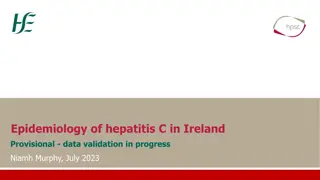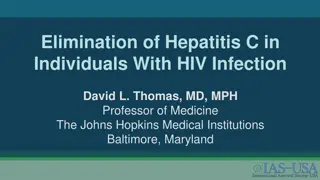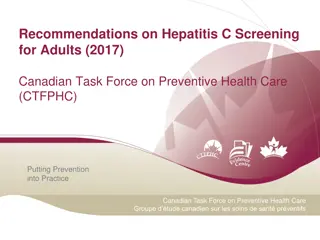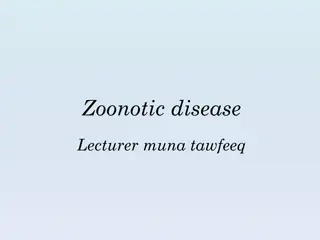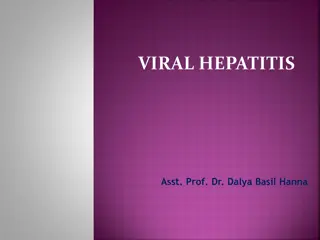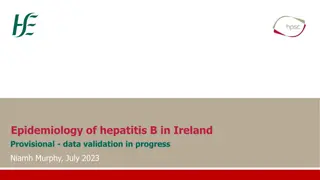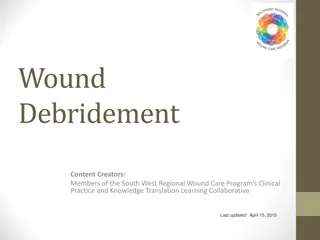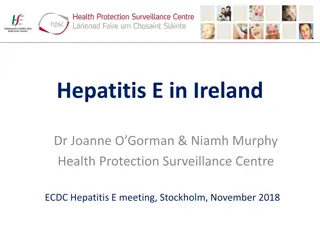Infectious Necrotic Hepatitis
Infectious Necrotic Hepatitis (Black Disease) by Dr. Hussein AlNaji. Learn about etiology, pathogenesis, clinical findings, diagnostic confirmation, and treatment options for Bacillary Hemoglobinuria (Red Water Disease) caused by Clostridium haemolyticum.
Download Presentation

Please find below an Image/Link to download the presentation.
The content on the website is provided AS IS for your information and personal use only. It may not be sold, licensed, or shared on other websites without obtaining consent from the author.If you encounter any issues during the download, it is possible that the publisher has removed the file from their server.
You are allowed to download the files provided on this website for personal or commercial use, subject to the condition that they are used lawfully. All files are the property of their respective owners.
The content on the website is provided AS IS for your information and personal use only. It may not be sold, licensed, or shared on other websites without obtaining consent from the author.
E N D
Presentation Transcript
Infectious Necrotic Hepatitis (Black Disease). By. Dr. Hussein AlNaji
2 ETIOLOGY C. novyi, type B. Spores of C. novyi are resident in soil and may be present in the liver of normal animals Affecting sheep and cattle and rarely pigs and horses.
Pathogenesis 3 Spores of f C. novyi are ingested and carried to the liver in the lymphatic system Under local anaerobic conditions, such as occur in the liver when migrating flukes cause severe tissue destruction Causes local liver necrosis and more diffuse damage to the vascular system. The nervous signs caused by this general vascular disturbance or by a specific neurotoxin. The organisms already present in the liver proliferate, liberating - toxin, which is necrotoxic.
4 CLINICAL FINDINGS Sheep Affected sheep commonly die during the night and are found dead without having exhibited any previous signs of illness. Cattle Clinical findings are the same in cattle as in sheep but the course is longer, with the illness lasting for 1 to 2 days Necropsy Findings Rapid autolysis, engorgement of subcutaneous vessels with edema; liver has small areas of yellow-colored necrosis surrounded by a zone of hyperemia
5 Diagnostic confirmation Isolation of C. novyi in the typical liver lesion; fluorescent antibody staining identifies C. novyi but not the type Treatment Penicillin G sodium/potassium (40,000 IU/kg IV every 6 8 h) (R-2) Control Clostridium novyi type B -toxoid vaccine
6 Bacillary Hemoglobinuria (Red Water Disease) Etiology Clostridium haemolyticum, which is a soil-borne anaerobe, produces phospholipase C ( -toxin) with strong necrotoxic and hemolytic activity. Epidemiology In cattle and sheep occurs in summer and autumn in endemic areas, which are usually irrigated or sub irrigated fields
Pathogenesis 7 The invasion occurs from the alimentary tract after ingestion of contaminated material. As in black disease of sheep, the bacteria are carried to the liver Caused damage to the parenchyma of the liver and the resulting hypoxia create conditions suitable for their proliferation Migrating flukes are thought to be predisposed to clinical disease by leading to liver necrosis and the establishment of anaerobic conditions in the liver that will lead to the multiplication of the bacteria C. haemolyticum returns to its vegetative state in an anaerobic environment and replicates, it also produces phospholipase C ( -toxin). This -toxin causes hemolysis, necrosis of hepatocytes, and damage to capillary endothelium, all of which lead to hemoglobinuria and loss of vascular fluid into tissues and serous cavities. The development of an organized thrombus in a subterminal branch of the portal vein produces the large anemic infarct that is characteristic of the disease
8 CLINICAL FINDINGS 1- The illness is of short duration, cattle at pasture may be found dead without clinical signs 2- More often there is a sudden onset, with complete cessation of rumination, feeding, lactation, and defection. 3- Abdominal pain is evidenced by reluctance to move and an arched-back posture. 4- Grunting may be evident on walking. 5- Respiration is shallow and labored and the pulse is weak and rapid. Fever (39.5 41 C, 103 106 F) is evident in the early stages. 6- Edema of the brisket is a common finding. T 7- he feces are dark brown; there may be diarrhea with a great deal of mucus and some blood. 8- The urine is dark red.
9 CLINICAL PATHOLOGY 1. The red color of the urine is caused by the presence of hemoglobin, there are no free red cells. 2. In the later stages there is anemia, characterized by a marked decline of packed cell volume and red blood cell counts. 3. Blood cultures during the acute stages of the disease may be positive. 4. Serum agglutinins against C. haemolyticum may be detect able at low levels.
NECROPSY FINDINGS 10 1. Rigor mortis develops quickly. The perineum is soiled with bloodstained urine and feces. 2. The characteristic lesion of bacillary hemoglobinuria is an ischemic infarct in the liver. 3. Red urine is present in the kidneys and bladder, and petechiation is evident throughout the kidney. Samples for Confirmation of Diagnosis 1. Bacteriology: Tissue from edge of liver infarct, placed in an airtight container; four air- dried impression smears from lesion border [anaerobic culture, FAT] 2. Histology: Fixed liver lesion, kidney.
DIFFERENTIAL DIAGNOSIS 11 1. Acute leptospirosis. 2. Postparturient hemoglobinuria. 3. Hemolytic anemia caused by cruciferous plants. 4. Babesiosis and anaplasmosis. 5. Enzootic hematuria. 6. Chronic copper poisoning (sheep) 7. Diseases caused sudden death.
12 TREATMENT AND CONTROL 1. Treatment Penicillin G sodium/potassium (15,000 IU/kg IV every 6 8 h) (R-2) 2. Oxytetracycline (15 20 mg/kg IV every 24 h) (R-2) 3. Supportive therapy Control Clostridium haemolyticum bacterin vaccine
13 BRAXY (BRADSOT) Braxy is an acute infectious disease of sheep icharacterized by inflammation of the abomasal wall, toxemia, and a high mortality rate. ETIOLOGY C. septicum is a common cause of malignant edema in animals EPIDEMIOLOGY 1. Braxy occurs only in midwinter when there are heavy frosts and snow, and usually only in weaner and yearling sheep. 2. C. septicum is a soil-borne organism and a normal inhabitant of the ovine intestinal tract. 3. In affected sheep the case fatality rate is usually about 50%.
14 PATHOGENESIS Presumably a primary abomasitis, associated with the ingestion of frozen grass or other feed, permits invasion by C. septicum, resulting in a fatal toxemia. CLINICAL FINDINGS 1. There is a sudden onset of illness with segregation from the group 2. complete anorexia, depression, and high fever 42 C (107 F) or more). 3. The abdomen may be distended with gas, and there may be signs of abdominal pain. 4. The sheep becomes recumbent, comatose, and dies within a few hours of first becoming ill.
15 DIFFERENTIAL DIAGNOSIS Clinical diagnosis of braxy is difficult TREATMENT No treatment has been found to be of any value CONTROL Management of the flock is important. The sheep should be yarded at night and fed hay before being let out to the frosted pasture each morning. Vaccination with a formalinkilled whole culture of C. septicum, preferably two injections 2 weeks apart, is also an effective preventive.
16 Thank You


